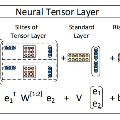6th generation (6G) communication research is currently focusing on non-terrestrial networks (NTNs) to promote ubiquitous and ultra-high-capacity global connectivity. Specifically, multi-layered hierarchical networks, i.e., the orchestration among different aerial/space platforms, including Low and High Altitude Platforms (LAPs and HAPs), and satellites co-operating at different altitudes, currently represent one the most attractive technological options to solve coverage and latency constraints associated with the NTN paradigm. However, there are still several issues to be resolved for proper network design. In this work, we evaluate the performance of different multi-layered non-terrestrial configurations, and provide guidelines on the optimal working point(s) for which it is possible to achieve a good compromise between improved system flexibility and network performance, with respect to a baseline standalone deployment.
翻译:第6代(6G)通信研究目前侧重于非地球网络(NTN),以促进无处不在和超高容量的全球连通性。具体来说,多层等级网络,即不同航空/空间平台(包括低高空平台(LAPs和HAPs))之间的交响以及不同高度的卫星合作,目前是解决与NTN模式有关的覆盖面和延缓性限制的最有吸引力的技术选项之一。然而,在适当网络设计方面仍有若干问题有待解决。在这项工作中,我们评估了不同多层非地球配置的性能,并就最佳工作点提供了指导方针,有可能在基线独立部署方面,在改进系统灵活性和网络性能之间达成良好妥协。



